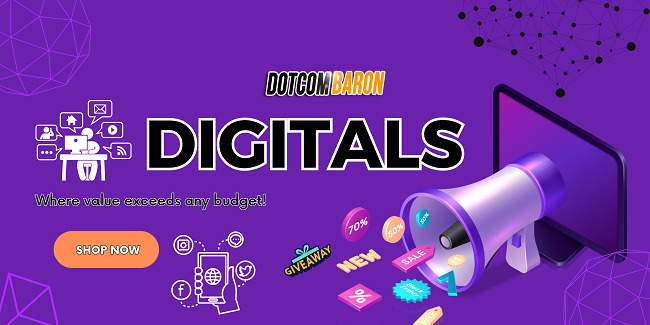Crafting compelling blog content is akin to weaving a tapestry of ideas that resonate with your audience.
This article uncovers the artistry behind creating engaging content, from curating tailored narratives to celebrating milestones.
It further explores the potential of podcasts and videos as dynamic canvases for storytelling.
For those committed to serving others through meaningful connections, this guide provides strategic, actionable steps towards transforming your blog into a beacon of value and relevance.
What You Will Discover:
- Content planning involves forecasting future content needs, deciding on content types, and scheduling releases.
- Understanding the audience’s preferences, needs, and pain points is essential for effective targeted curation.
- Valuable blog content increases website traffic, establishes credibility and authority, attracts and engages the target audience, encourages social media sharing, and generates leads and conversions.
- To promote and optimize blog content, research and identify the target audience’s interests and needs, use tools like Google Analytics for insights, conduct surveys and interviews for feedback, monitor social media discussions and trends, use keyword research tools to identify popular topics, analyze competitor blogs for content gaps, stay updated with industry news and trends, plan a content calendar for consistent publishing, write attention-grabbing headlines, use storytelling techniques to engage readers, provide actionable tips and advice, include relevant visuals like images and infographics, format content for easy readability with subheadings and bullet points, share blog posts on social media platforms, engage with online communities and forums, collaborate with influencers for guest blogging opportunities, and optimize blog content for search engines with relevant keywords.
Understanding Content Creation
In the realm of digital marketing, content creation, a process involving the generation of innovative topic ideas and the creation of written or visual materials, plays a pivotal role.
A well-formulated content strategy is essential in this era where information is abundant and competition is fierce. This strategy serves as a blueprint guiding the creation, delivery, and governance of content that resonates with the target audience.
Content planning is an integral part of this strategy. It involves forecasting future content needs, deciding on the types of content to produce, and scheduling content releases in a way that optimally engages the target audience.
This process is multi-faceted, involving the integration of market trends, audience preferences, and business objectives.
Content optimization is another crucial aspect of content creation. This involves enhancing the content to ensure it is easily discoverable, relevant, and valuable to the target audience.
Optimization could entail using SEO techniques, incorporating multimedia, or tailoring the language and tone to suit the audience’s preferences.
Finally, content distribution involves strategically disseminating the content across different channels to reach the target audience.
This could be through social media, emails, blogs, or even podcasts. The choice of distribution channels depends on where the target audience is most active and receptive.
In essence, content creation is not merely about producing content. It involves strategic planning, optimization, and distribution to ensure the content effectively serves the target audience and achieves the desired business objectives. Serving others through content creation thus requires a thorough understanding of these processes.
Developing Content Ideas
How, then, does one develop impactful content ideas that resonate with the target audience and drive engagement? The answer lies in an amalgamation of strategies such as brainstorming techniques, researching trends, engaging with the audience, leveraging data analytics, and collaborating with industry experts.
Brainstorming techniques play a pivotal role in unearthing innovative content ideas. Here, the focus is on fostering an open space for free-flowing thoughts, which can be refined into valuable content.
A part of this involves researching trends, a process that keeps your content fresh, relevant, and in tune with the ongoing discourse in your industry.
Easiest tool: “Google Trends”
Engaging with the audience is another key aspect. This not only means responding to comments or messages but also involves actively seeking their input in content creation.
Surveys, polls, and Q&As are excellent methods to understand what your audience is interested in, what their needs are, and how your content can meet those needs.
Moreover, leveraging data analytics can provide valuable insights into what type of content resonates most with your audience. It can help identify patterns, preferences, and engagement levels, thereby informing future content strategies.
Lastly, collaborating with industry experts can lend credibility and depth to your content, enhancing its value for your audience. By intertwining these strategies, you can consistently create content that is not only engaging but also truly valuable.
Curating Content for Audience
Transitioning from idea generation to content curation, it’s essential to tailor your content specifically to your target audience for maximum engagement and value.
This process, known as targeted curation, allows for the creation of engaging content that resonates with your audience, thereby enhancing the value proposition of your blog.
The cornerstone of effective targeted curation is understanding your audience’s preferences, needs, and pain points. By doing so, you can provide personalized recommendations that meet their specific needs and preferences. These recommendations can be in the form of blog posts, videos, infographics, and other content types that your audience finds valuable and engaging.
Furthermore, content curation should not be a solitary activity. Collaboration is key to creating content that is diverse, innovative, and appealing. Influencer collaborations, for instance, can provide fresh perspectives and insights that would otherwise be inaccessible.
By featuring influencers in your content, you not only tap into their expertise and credibility but also their audience, thereby expanding your reach.
User-generated content is another excellent resource for content curation. It provides authentic and relatable content that other members of your audience can resonate with. Moreover, it encourages audience participation and engagement, fostering a sense of community among your audience members.
Celebrating Achievements in Blogs
A significant portion of creating valuable blog content lies in acknowledging and celebrating your accomplishments and milestones, thus fostering a sense of achievement and community among your reader base.
Recognizing achievements goes hand in hand with the creation of engaging content that resonates with your audience and strengthens your bond with them.
Celebrating success stories, milestone moments, and showcasing victories, not only uplifts you as a content creator, but serves as a source of inspiration and motivation for your audience.
Here’s how you can incorporate this approach into your blog:
- Success Stories: Sharing personal success stories or those of others in your field can be greatly inspiring. These narratives not only highlight your accomplishments but also provide a roadmap for others to follow.
- Milestone Moments: Documenting your milestone moments offers a transparent view of your journey. This can help to humanize your brand, making it more relatable and trustworthy to your audience.
- Showcasing Victories: Celebrating victories, big or small, fosters a positive community. It’s about recognizing the hard work and dedication that brought about these wins, and encouraging others to strive for their own victories.
Podcasts and Videos as Content
Building on the idea of celebrating victories in blogs, the incorporation of podcasts and videos can further enhance the richness and diversity of your content offering.
These mediums allow for engaging interviews, interactive episodes, and visual storytelling, creating a more dynamic and immersive experience for your audience.
Podcasts are an excellent platform for expert roundups, where thought leaders in your industry can share their insights and experiences.
These engaging interviews not only provide valuable content but also broaden your network and enhance your credibility. Interactive episodes, where listeners are encouraged to participate or take action, create a sense of community and active engagement, fostering loyalty among your audience.
Videos, on the other hand, offer an opportunity for visual storytelling. The use of visuals can communicate complex ideas more effectively and is more likely to captivate the viewer’s attention.
Behind the scenes footage, for instance, can give a human face to your brand, fostering an emotional connection with your audience. It provides a sense of authenticity and transparency, key factors in building trust.
Additionally, expert roundups can also be executed through video interviews. This provides a more personal touch, as viewers can see and hear from the experts directly.
Frequently Asked Questions:
How Can I Optimize My Blog Content for Seo?”
To optimize blog content for SEO, implement strategic keyword research, craft compelling meta descriptions, and undertake image optimization. Effective URL structuring and robust link building are also essential for enhancing your blog’s visibility and ranking.
What Are Some Effective Ways to Promote My Blog Content on Social Media?”
Effective promotion of blog content on social media can be achieved through strategic influencer partnerships, targeted paid advertisements, engaging in viral challenges, sharing video teasers, and encouraging user-generated content for a broader reach and engagement.
How Can I Effectively Measure the Success of My Blog Content?”
To effectively measure blog content success, utilize content analytics to track audience engagement, bounce rates, and conversion. Additionally, user feedback can provide invaluable insight into content relevancy and effectiveness, facilitating strategic content improvement.
What Are Some Techniques for Repurposing Blog Content Into Other Formats?”
Repurposing blog content into other formats, such as podcast development, video conversion, infographic creation, and eBook compilation, is an effective content recycling strategy that enhances audience engagement and broadens content reach.
How Can I Maintain Consistency and Regularity in My Blog Content Creation?”
Maintaining consistency in blog content creation involves strategic use of editorial calendars for content planning, establishing writing routines, ensuring topic consistency, and committing to regular updates to serve your audience effectively.
Conclusion
In conclusion, the art of creating valuable blog content is a multifaceted process, requiring a strategic blend of creativity, audience engagement, and technology.
Implementing these techniques not only enhances the quality of the content but also amplifies brand visibility and customer loyalty.
In the irony of our digital era, it is through such thoughtful, humanized content that businesses can truly connect, engage, and thrive.
Indeed, the pen, or rather the keyboard, is mightier than ever before.








